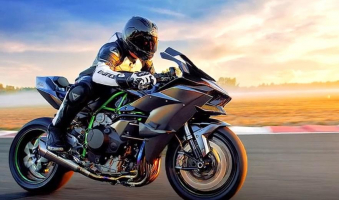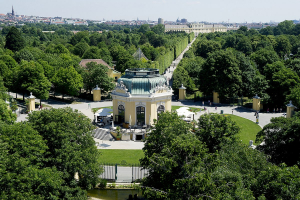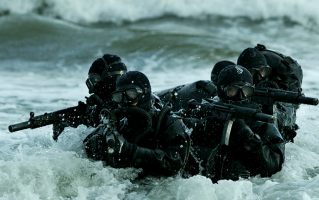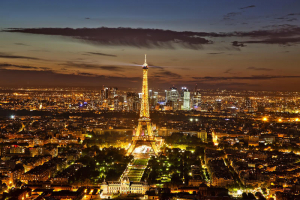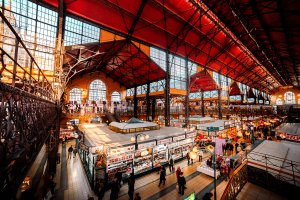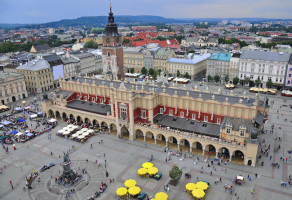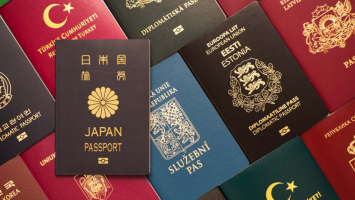Top 14 Fastest Trains In The World
In terms of technology and mobility, trains are a modern marvel. Numerous trains go at speeds that most people might not anticipate. Since railroad stations ... read more...are typically found in or close to cities, you don't need to leave your house for at least two hours. Read on for the fastest trains in the world!
-
Siemens Velaro is a family of high-speed electric multiple-unit trains that are utilized in China, Russia, Turkey, Germany, Belgium, France, the Netherlands, and the United Kingdom. The ICE 3M/F high-speed trains produced by Siemens for the Deutsche Bahn are the basis for the Velaro (DB). Siemens high-speed trains were first ordered by the Deutsche Bahn, which placed orders for 13 of them in 1994 and for 4 from Nederlandse Spoorwegen (NS). In order to be used, the trains were delivered in 1999. Siemens, the train's manufacturer, marketed and branded the vehicles as Velaro.
The world's top-performing high-speed train is the Siemens Velaro E, known as AVE S 103 in Spain. During its test runs in Spain, it hit a top speed of roughly 400kmph.
The train can travel at a maximum speed of 350 kph. The train runs on the Barcelona-Madrid line and was ordered by Spanish National Railways Renfe. It was delivered in July 2005, and by June 2007 it was operating. The successful ICE 3 trainset created for Deutsche Bahn served as the basis for the design of the multiple-unit train.
Country: Spain
Speed: 400 kmph
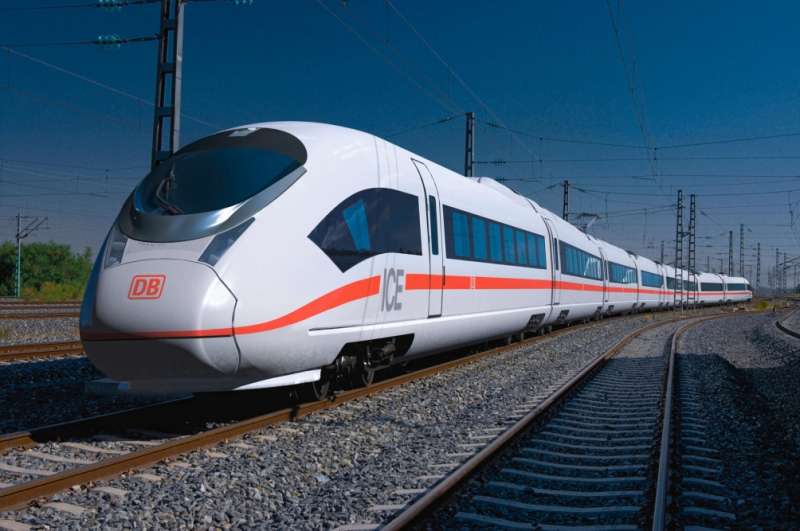
Photo: dlmag 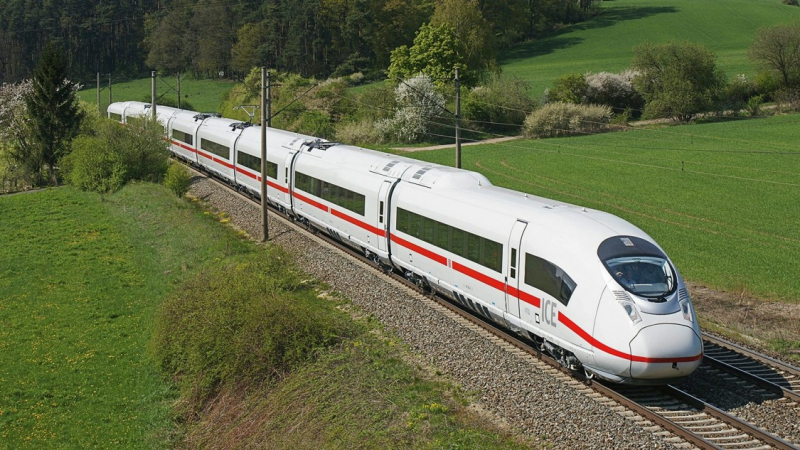
Photo: Siemens Mobility -
Japan's L0 Series Maglev, one of the fastest trains in the world with a top speed of 375 mph or 603 km/h, just edges out the competition. The Japanese train was built in 2012 and has 12 train cars in total, adding up to a total length of 981 feet. Similar to the previous model, the L0 Series Maglev can carry up to 728 passengers while moving quickly.
The SCMaglev system, created in Japan, is used by the L0 series. A subsidiary of JR Central called Nippon Sharyo and Mitsubishi Heavy Industries are constructing fourteen pre-production cars.
L0 Series from Japan Being the fastest train in existence, Maglev promotes other Maglev trains. A long nose on the front of the train, which lowers drag and energy consumption, makes it a particularly clever and efficient train. This train is capable of absurdly high speeds, and it has long been a well-liked aspect of Japanese technology, both of which support its claim to be the undisputed king of fast trains in 2022. Starting in May 2020, it is intended to replace the L0 series with a redesigned model (named the "Improved L0 series"). The guideway will supply power to this L0 series for the first time via induction.
Country: Japan
Speed: 375 mph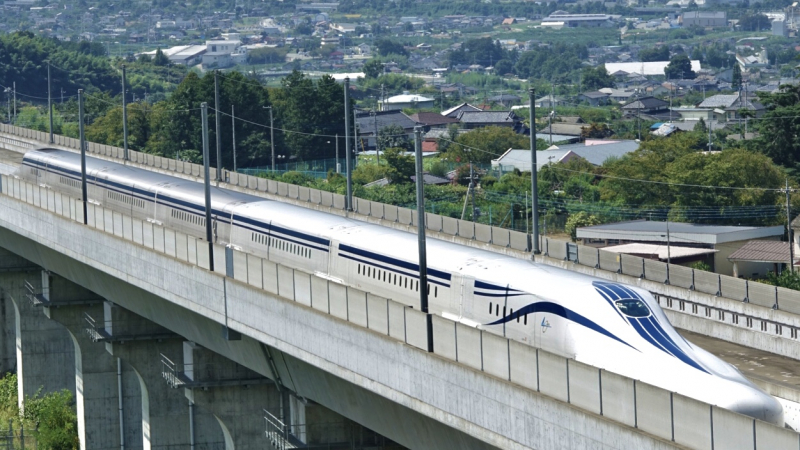
Photo: Wikipedia Video: ula -
With a top speed of 373 mph or 600 km/h, the CRRC Qingdao Sifang 2021 Maglev, known as the fastest train in China, is a genuinely potent force. As the train's name implies, it was produced in 2021, a notable year for superhero movies. For those who detest being crammed onto trains, the train can hold over 900 passengers at once and can have as few as five cars or as many as ten.
Despite carrying many passengers, the railway has a good reputation for safety. The train becomes one of the most appealing to ride when speed, safety, and a large capacity are combined. It is also a fantastic alternative for individuals who dislike flying, as taking this train from Shanghai to Beijing only adds a half-hour to the flight time.
According to the CRRC Qingdao Sifang Rolling Stock Research Institute, the trainset superseded the existing maglev design with a system that allows the train to brake in 10 km as opposed to the 16 km needed by China's only other maglev line, which serves Shanghai airport.
The fields of power supply, the couplers connecting the carriages, and control and communication also required solutions. Access to 5G wifi and wireless phone charging will be available to passengers.
Country: China
Speed: 373 mph
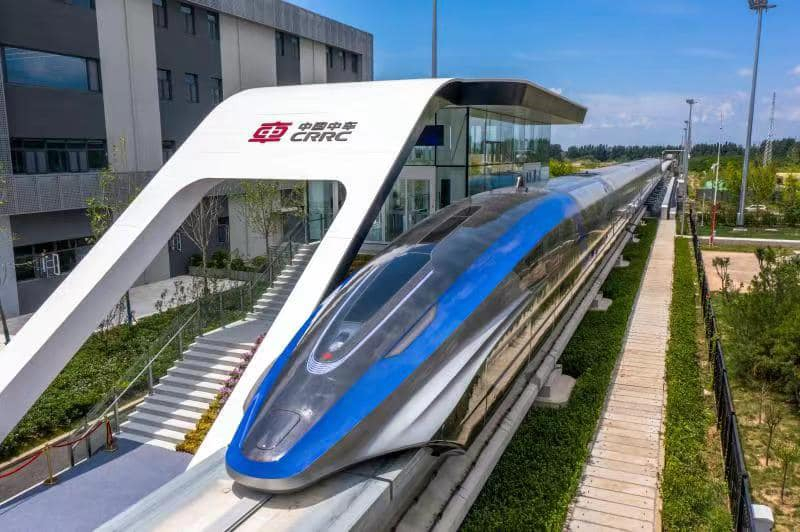
Photo: Global Construction Review Video: SciNews -
The French national rail corporation, SNCF, operates the TGV POS, a TGV train developed by Alstom in France, on the country's high-speed rail lines. It was initially purchased by the SNCF to be used on the 2007-introduced LGV Est. Paris-Ostfrankreich-Süddeutschland is referred to as "POS" (German for "Paris, Eastern France, Southern Germany").
In France, there is a high-speed train called the TGV. With top speeds of 357 mph, it is one of the fastest trains in the world. Since it began operating in 1981, the TGV has transported more than 1 billion people. The French national railroad company, SNCF, runs the TGV. It functions on both dedicated high-speed lines and regular lines. Over 2,000 kilometres (1,243 miles) of track make up the TGV network. The TGV is renowned for its speed as well as its comfort and dependability. It is regarded as one of the safest modes of transportation and has a good safety record.
Three specially modified Duplex cars, marshaled between the TGV POS power cars and equipped with two powered bogies similar to the AGV prototype, made up the trainset. On various engine and vehicle components, there are about 600 sensors.
Country: France
Speed: 357 mph
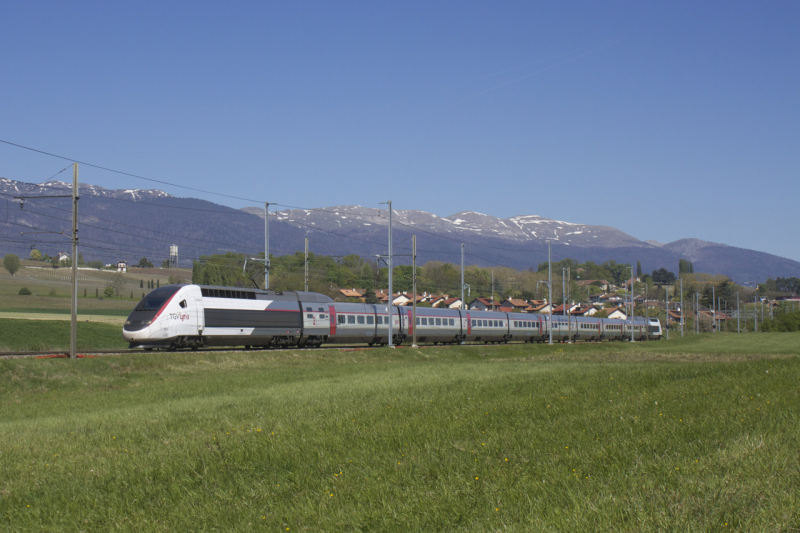
Photo: Wikipedia 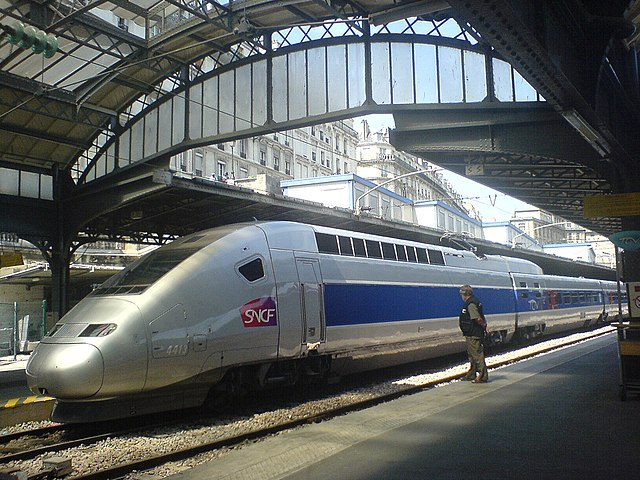
Photo: Wikipedia -
The CSR Corporation Limited (CSR) designed the CRH380A Hexie, a Chinese electric high-speed train that is now produced by CSR Qingdao Sifang Locomotive & Rolling Stock Co., Ltd. As an extension of the CRH2-380 program, it boosts the top speed of the CRH2 while also replacing foreign technology with Chinese innovations. In commercial service, the CRH380A is intended to travel at a maximum speed of 380 km/h (236 mph) and a cruise speed of 350 km/h (217 mph). During a test run, the initial 8-car train set had a top speed of 416.6 km/h (258.9 mph). At 486.1 km/h, the extended 16-car train set was traveling (302.0 mph).
One of the four Chinese train series built for the new normal operating speed of 302mph) on recently built Chinese high-speed main lines is the CRH380A. Although it was not created in accordance with a technology transfer agreement, there have been claims that it is based on unlicensed Shinkansen technology. Officially, it is the only series of the four that is not based on a foreign design. The Beijing-Shanghai High-Speed Railway received its first shipment of CRH380A trains in 2011, and these vehicles began operating on the network for a fee. 577 CRH380A train sets have been created and put into service on various high-speed routes in China as of 2019.
Country: China
Speed: 302 mph
Video: A Train Depot 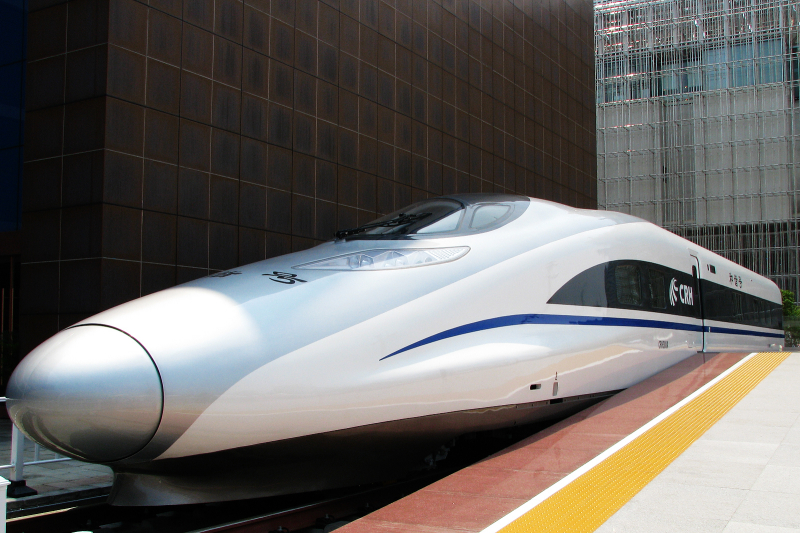
Photo: Wikipedia -
The first commercial maglev line in the world is the Shanghai Maglev Train (also known as the Shanghai Maglev Demonstration Line). The line connects Longyang Road Station on Shanghai Subway Line 2 to Pudong International Airport, and the eight-minute trip covers the 30 km distance (19 miles). During the trip, it can achieve speeds of up to 431 km/h (268 mph). It was officially recognized as the fastest train in commercial usage in 2003 by Guinness World Records.
The train line runs from Shanghai Pudong International Airport (transfer to Line 2) to Longyang Road Station, which is on the outskirts of central Pudong and where travelers can change to Lines 2, 7, 16, and 18 to continue their journey to the city center through the Shanghai Metro. It offers a separate service to Pudong Airport between central Shanghai and Longyang Road Station, and is not a part of the Shanghai Metro network (Line 2).
The line's construction started on March 1, 2001, and public commercial service started on January 1, 2004. The Shanghai Transrapid project was finished in two and a half years at a total cost of 10 billion (US$1.33bn). The line has a track that is 30.5 km (18.95 mi) long and a side track that leads to a maintenance facility.
Country: China
Speed: 268 mph
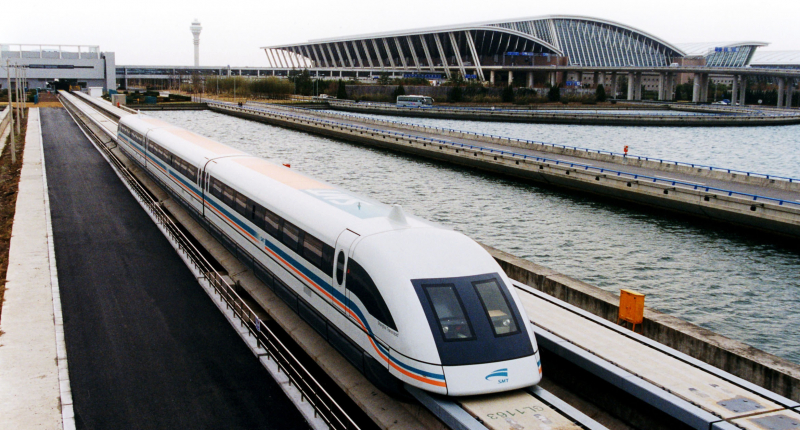
Photo: Wikipedia 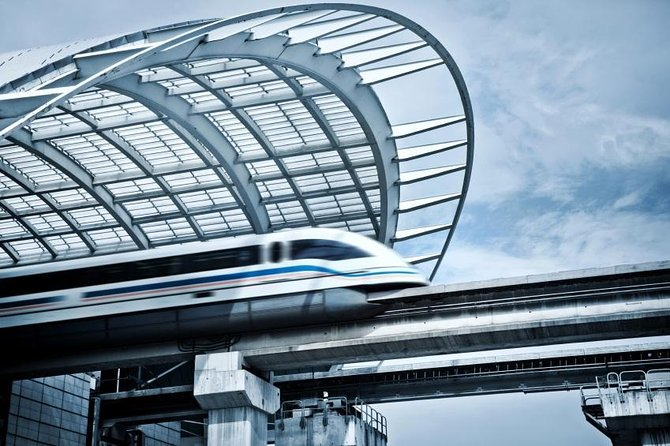
Photo: Viator -
High-Speed Electric Multiple Unit 430 km/h eXperimental, or HEMU-430X, is a South Korean high-speed train with a 430 km/h top speed (267 mph). After France, Japan, and China, South Korea became the fourth nation in the world to construct a high-speed train that can travel above 420 km/h on March 31, 2013, when it exceeded 421.4 km/h during a test run.
Distributed traction is the key innovation of the train as compared to earlier South Korean high-speed trains. The EMU-260 (formally known as "Eum" as of October 2022) and EMU-320 commercial versions of the trains were shipped to Korail between 2020 and 2021.
The 6-car HEMU-400X is equipped with distributed traction, meaning that all four intermediate cars' axles are powered, as opposed to the articulated passenger coaches between traction heads of the KTX-I, HSR-350x, and KTX-II trains. The experimental train's trailing end driving trailer was converted into a powered car in the comprehensive designs published in October 2010, departing from the intended commercial design. The goal is to create and test both asynchronous induction motors and permanent magnet synchronous motors in the train, much to JR East's Fastech 360 program.
Country: South Korea
Speed: 267 mph
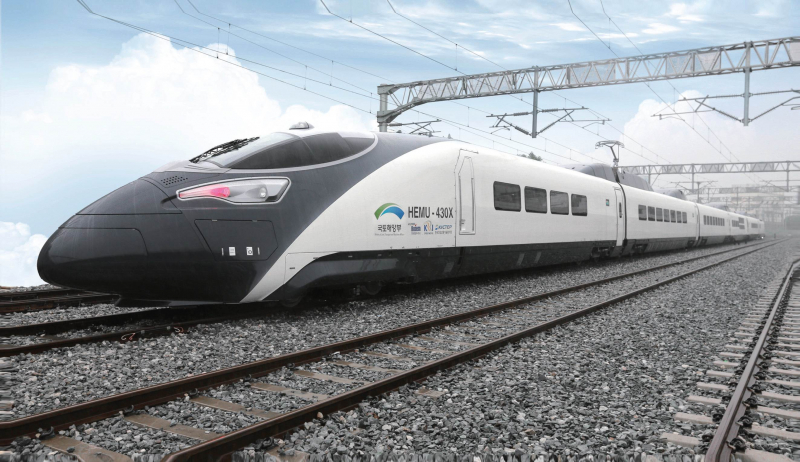
Photo: www.krri.re.kr 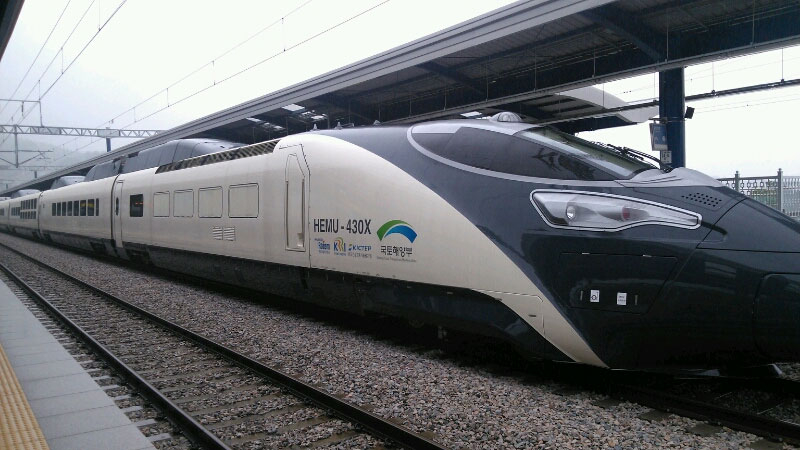
Photo: KhoaHoc.tv -
China triumphs once more and is also the location of the fastest non-Maglev train that is currently in operation. A new class of high-speed trains called Fuxing Hao was created by the Chinese companies CRRC and China Railway. The name "Fuxing Hao" means "rejuvenation," and each of the trains has been given a moniker, such as "Dolphin Blue" for the CR400AF and "Golden Phoenix" for the CR400BF. (The "CR" is an abbreviation for China Railway.)
Both can transport up to 556 passengers in slightly under five hours between Beijing South and Shanghai Hongqiao Station, easily cutting the roughly ten-hour travel time on the traditional, parallel rail line in half. The lines that these trains travel on have significantly increased over the past few years. Newer routes include Jinan-Qingdao and Guangzhou-Zhuhai. In 2018, the world's longest high-speed rail route, which travels from Beijing to Hong Kong in nine hours, made its debut.
Red or golden color schemes are used to decorate the outside of trains. The luxurious seats in the first-class section of the train may be folded down into beds. Additionally, the chairs have adjustable headrests and are positioned to give passengers comfortable legroom. In addition to having free access to the vehicle's unrestricted Wi-Fi connectivity, passengers can charge their phones or laptops using the power outlets located on the seats.
Country: China
Speed: 260 mph
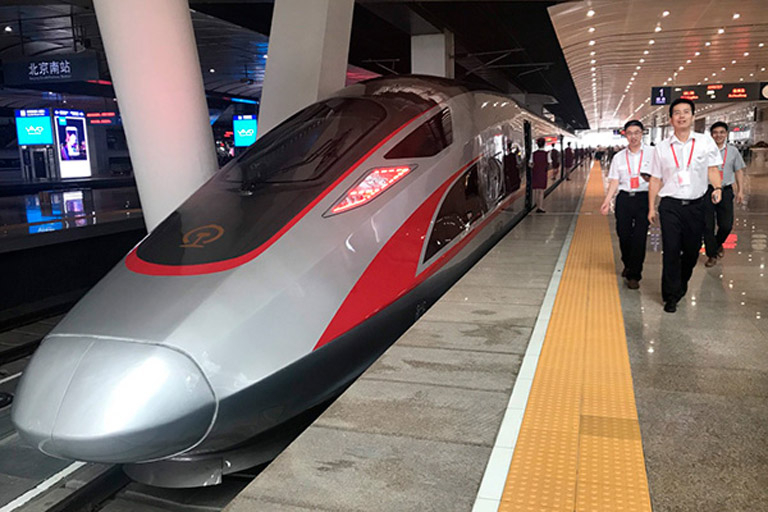
Photo: Fuxing Hao CR400AF-China Discovery 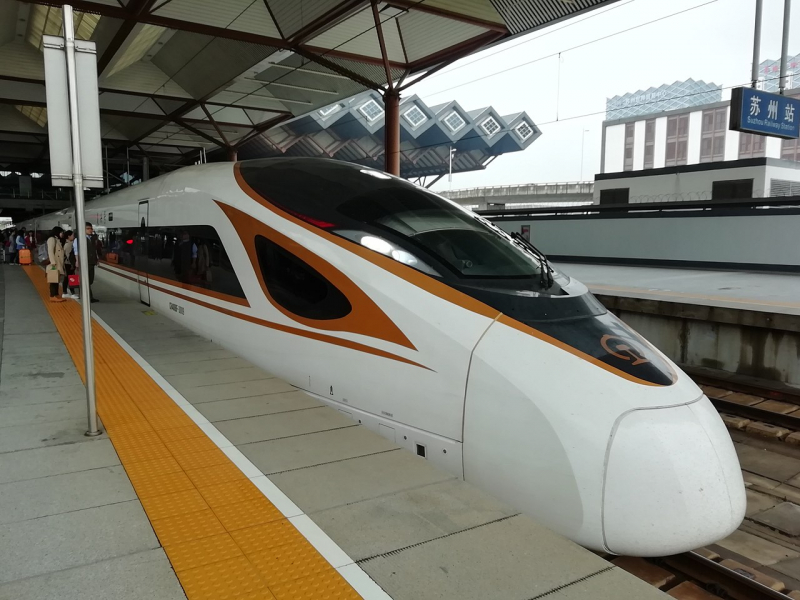
Photo: Fuxing Hao CR400BF - Wikimedia Commons -
High-speed train Frecciarossa 1000 is run by Trenitalia, the national railway company of Italy. It was co-developed as a joint venture between international corporation Alstom and Italian rail company Hitachi Rail Italy.
The train can travel at up to 400 km/h and is run by Trenitalia (250 mph). The earlier Frecciarossa trains were replaced by the Frecciarossa 1000, which went into service in 2015. Comparing the Frecciarossa 1000 to the older Frecciarossa trains reveals major advancements. The inside of the new train is more pleasant, and it can go at higher speeds. The train's exterior has also been modernized, sporting a sleek appearance.
Frecciarossa 1000 is able to travel at such breathtaking speeds because of brilliant engineering. This is the first Italian train that is built to be compatible with all high-speed rail systems in Europe. The Frecciarossa 1000 is an environmentally friendly and highly technical train that can ensure the utmost comfort and the best travel experience without harming the environment thanks to its contemporary operating system.Country: Italy
Speed: 250 mph
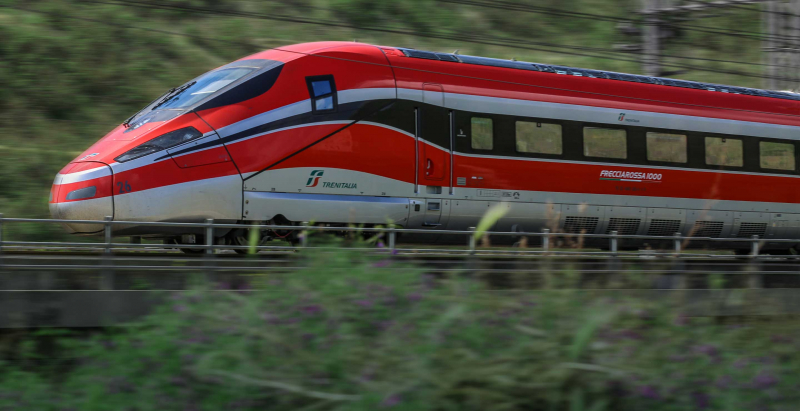
Photo: Trainline Video: Dylan's Travel Reports -
In Italy, there is a high-speed railway called the AGV Italo. Alstom created the train set, which is being run by NTV. It is the fastest operating train in Italy and has been in revenue service since April 2012. One of the fastest trains in the world, the AGV Italo can travel up to 360 km/h (224 mph). There are eight vehicles in the train set, four of which have electric motors. Iberian gauge tracks, which are wider than standard gauge tracks, are used by the AGV Italo.
The propulsion system of Italo trains, which are based on the most recent generation of extremely fast AGV Alstom trains, is dispersed across the entire train as opposed to being focused in specialized locomotives at the front and rear of the train. By doing away with locomotives, this creative idea increases capacity on board by 20%. With the extra room created, more passengers may board.
A large portion of the vibration and noise generated by movement on board is also eliminated by its articulated trainset architecture with distributed power, which also absorbs movement between cars, optimizes the train's aerodynamics, ensures maximum safety, and offers maintenance savings of 15%.
Country: Italy
Speed: 224 mph
Photo: Tom Jenssen 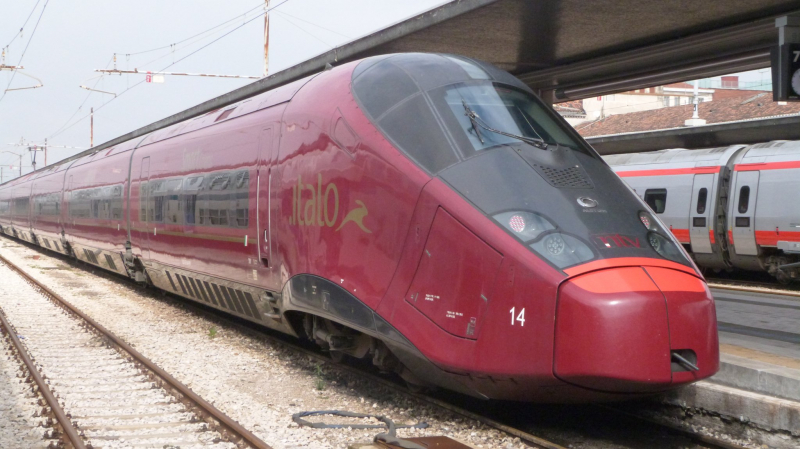
Photo: Wikimedia Commons -
Japanese high-speed train models known as the Shinkansen E5 and H5 series are produced by Hitachi Rail and Kawasaki Heavy Industries. The train runs between Tokyo and Osaka, reducing the distance traveled from seven to four hours. One of the quickest trains in their nation's regular commercial operation is this one.
East Japan Railway Company (JR East) runs the E5 series, which debuted on Tohoku Shinkansen services on March 5, 2011, and Hokkaido Shinkansen services on March 26, 2016. Three sets of the 59 10-car sets that are on order will be in operation by the time the new Hayabusa services to Shin-Aomori begin in March 2011.
The Hokkaido Railway Company (JR Hokkaido) operates the H5 series, a cold-weather variant of the E5 series, which has been in use on Tohoku and Hokkaido Shinkansen trains since March 26, 2016. Four 10-car sets in total, ordered in February 2014, were produced by Hitachi and Kawasaki Heavy Industries for a total of about 18 billion (US$169.9 million). In October 2014, the first two sets were delivered.
Country: Japann
Speed; 224 mph
Video: The H5 series- hdvideoridha Video: Shinkansen E5 series "Hayabusa" - Sendai & Tokyo ErebosSan -
Spain has a high-speed train called the AVE. It can go at speeds of up to 350 km/h (217 mph). The state-owned railroad firm Renfe has been running the AVE since its introduction in 1992. The AVE network is the longest high-speed rail network in Europe, with a total length of almost 3,000 kilometers (1,864 miles) of track. Major Spanish cities like Madrid, Barcelona, Valencia, and Sevilla are connected by the AVE. Additionally, it provides international services to Portugal and France.
The network of high-speed rail rails used by AVE trains is owned and operated by ADIF (Administrador de Infraestructuras Ferroviaria). Madrid, Cordoba, and Seville were connected by the first line, which was inaugurated in 1992. The AVE runs on standard gauge, unlike the remainder of the Iberian wide gauge network. This enables direct links to networks outside of Spain via the Perthus Tunnel's connection to the French network. Although private firms may be able to run trains in the future under different brands thanks to European Union legislation, AVE trains are currently operated by Renfe. Prior to the new rolling stock being commissioned for these services, some TGV-derived trains ran at reduced speeds on the broad-gauge network under the Euromed brand.
Country: Spain
Speed: 217 mph
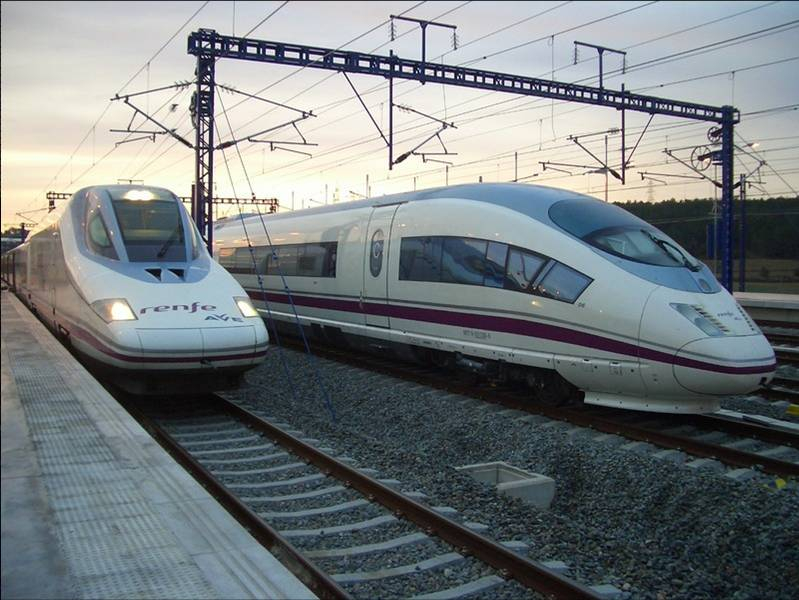
Photo: Wikipedia Video: ShootingBox -
The ICE 3 is the third iteration of the ICE, and it features some significant upgrades over earlier models. It was required to add power in more train cars because of the planned high-speed lines' higher top speed of 320 km/h (200 mph) and steeper slopes (4%) than existing high-speed lines, including Köln-Frankfurt. Therefore, rather than focusing the electricity in one or two power units, the decision was made to distribute it throughout the entire train. The ICE 3 will have 16 powered wheels and be an eight-car "half train" that can use double traction like the ICE 2.
There is no longer a locomotive on the 8-car ICE 3 (the traction equipment is spread over the entire train). In comparison to the ICE 1 and ICE 2, the carriages are shorter and slimmer. It now has one huge oval window in place of the two rectangular ones on the front, which has been more streamlined. The first and last cars' occupants have the option of looking out the cab. Although it has a steeper, less streamlined profile, the tilting InterCity train ICT for classic lines has the same fundamental front configuration. At the Eurailspeed, the ICE 3 made its debut in front of the general public (Berlin, November 1998).
Country: Germany
Speed: 200 mph
Video: The Man in Seat 61 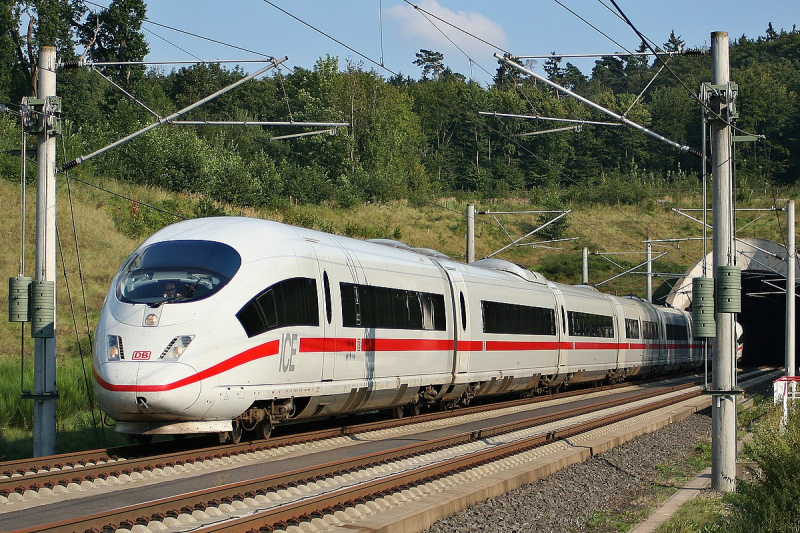
Video: Wikipedia -
A highly fast train called the Talgo 350 (T350) was created by the Spanish business Patentes Talgo (Tren Articulado Ligero Goicoechea Oriol). The partnership between Patentes Talgo and Bombardier Transportation produces it.
On the Madrid-Barcelona and Madrid-Valladolid lines in Spain, the train debuted as the RENFE AVE Class 102 high-speed trains. Due to the train's front end resembling a duck's beak, it is also known as Pato (Spanish for "duck").
For the high-speed rail line running between Madrid and Barcelona, Talgo 350 development was started. In 1997, work on the prototype development began. Trial runs of the finished prototype got under way in 2002.
The Talgo 350 can go at a maximum speed of about 220 mph (350 km/h). The Talgo 350 trainset consists of the Series VII Passenger carriages and the Talgo 350 Traction Unit, which uses cutting-edge AC propulsion with water-cooled IGBT technology. The Talgo 350 has four safety systems with tilting suspension, the newest technological systems for a "push-pull" arrangement, and axles and tractor bogies with a Talgo RD gauge changing system. There are 16 Talgo 350 Trainsets (224 cars, including the Power Heads), as of the first quarter of 2009. Currently being constructed are an additional 30 trainsets that will soon enter service. Currently, trains built by Talgo 350 are deployed in Europe.
Country: Spain
Speed: 220 mph
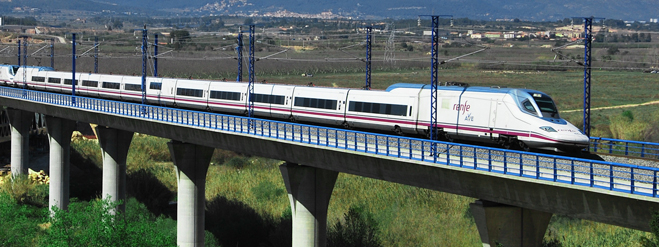
Photo: Talgo 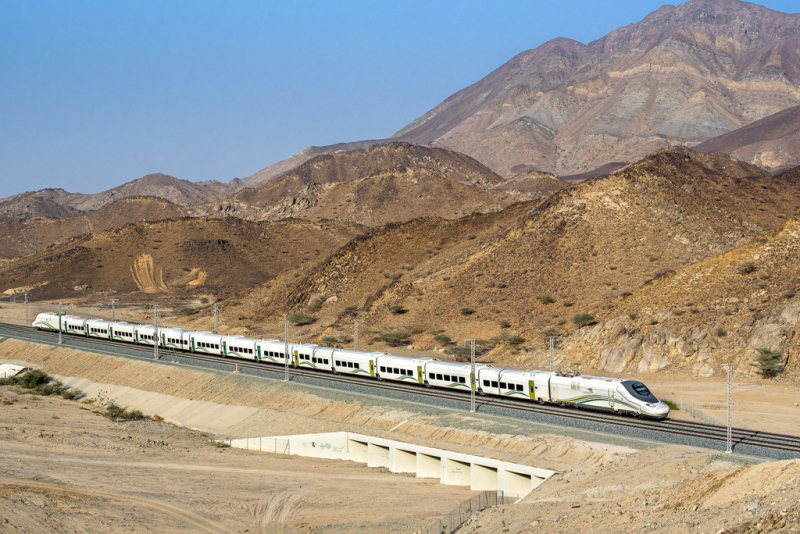
Photo: Trainspo

















